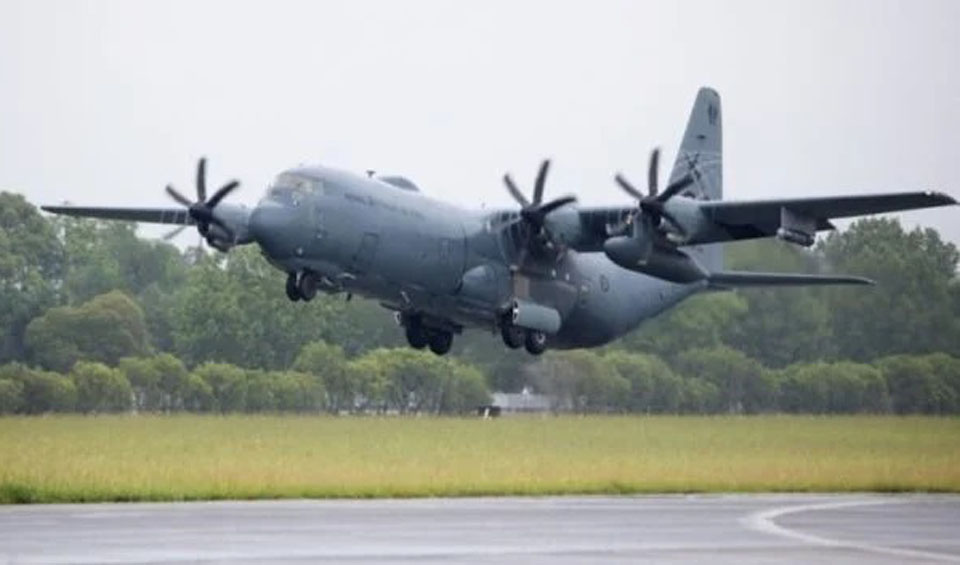
SYDNEY, Jan 20, 2022 (BSS/AFP) - The first humanitarian flights are
finally on the way to volcano and tsunami-stricken Tonga, five days after the
dual disaster cut the Pacific nation off from the rest of the world.
Officials in Australia and New Zealand confirmed that two military
transport planes should arrive within hours at Tonga's main airport, which
was only recently cleared of ash after painstaking effort.
A "C-17 Globemaster left from Amberley Airport Base around 7:00 am today
(2000 GMT)," an Australian defence official told AFP, with New Zealand also
confirming a C-130 Hercules was on route following days of delays.
The flights will carry vital humanitarian supplies such as water and
telecommunications equipment.
News from Tonga has been severely limited since the weekend's disaster,
which damaged undersea communications cables.
On the ground, Tongans have scrambled to clear the runway at Fua'amotu
International Airport of a thick blanket of volcanic ash.
UN crisis coordinator Jonathan Veitch told AFP late Wednesday that the
runway on the Pacific kingdom's main island -- buried in five to 10
centimetres (two to four inches) of ash -- was again operational after days
of hard toil clearing the concrete.
Ash particles can be poisonous and pose a threat to modern jet aircraft,
including by melting and accumulating in the engines.
Three people were killed when the Hunga Tonga-Hunga Ha'apai volcano
exploded on Saturday, triggering tsunami waves that ripped down homes and
caused widespread flooding.
The overwhelmed Tongan government has called the dual eruption-tsunami "an
unprecedented disaster" and reported that waves as high as 15 metres (50
feet) destroyed almost every home on some outlying islands.
More than 80 percent of the archipelago's population of 100,000 have been
impacted by the disaster, the United Nations said Wednesday, and initial
assessments indicate an urgent need for drinking water.
When the underwater caldera exploded, it fired debris 30 kilometres (19
miles) into the air and deposited ash and acid rain across the kingdom of 170
islands -- poisoning water supplies.
"Water supplies across Tonga have been severely impacted by ashfall and
saltwater from the tsunami," said Katie Greenwood of the International
Federation of Red Cross and Red Crescent Societies.
She said there was a "mounting risk of diseases such as cholera and
diarrhoea".
- Cleared for landing -
Both Australia and New Zealand are sending help by sea, with Royal New
Zealand Navy ships HMNZS Wellington and HMNZS Aotearoa expected to arrive in
Tongan waters Friday.
They are carrying water supplies and a 70,000-litre-a-day desalination
plant, as well as navy hydrographic and dive personnel to survey shipping
channels.
Australian military relief ship the HMAS Adelaide is also standing by in
Brisbane.
It is Canberra's "hope and intent" the ship will depart for the island
kingdom Friday, an Australian official said.
HMAS Adelaide will carry "water purification equipment and additional
humanitarian supplies," as well as two Chinook heavy-lift helicopters.
China has also said it will send emergency supplies.
Meanwhile, there are also fears for the island's food supplies, with a
tearful national assembly speaker Fatafehi Fakafanua saying "all agriculture
is ruined".
- Incommunicado -
The eruption was one of the most potent in decades, releasing a pressure
wave that traversed the planet, travelling at supersonic speeds of about
1,230 kilometres per hour, New Zealand's National Institute of Water and
Atmospheric Research said.
It broke a vital undersea communications cable linking Tonga with the rest
of the world and leaving Tongans overseas scrambling to contact loved ones.
While partial communications were restored Wednesday, mobile phone network
provider Digicel said Thursday the high number of calls to the island was
producing delays.
It is expected to be at least a month before the undersea cable connection
is fully restored.
The Red Cross finally reached its team in Tonga via satellite phone
Wednesday. The organisation sent an emergency team to the hard-hit islands of
Mango, Fonoifua and Namuka.
A 65-year-old woman in Mango was one of three people confirmed dead, along
with a 49-year-old man and a British national. Multiple injuries were also
reported.
Neighbouring countries have relied on surveillance flights and satellite
images to assess the scale of the disaster.
The latest images showed vast areas covered in ash, roads inundated, walls
toppled and buildings smashed, as well as open water where most of the
volcanic structure stood above sea level before the eruption.